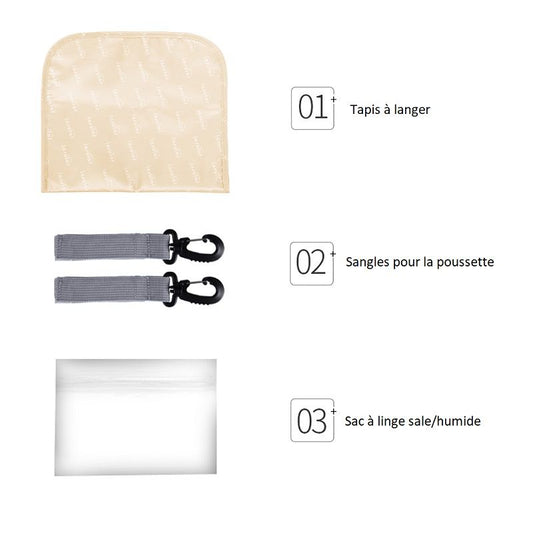A Quick Overview of Induction Birth
- Induction of birth (also called " induction of labor ") occurs when an obstetrician begins a mother's labor through medical intervention instead of waiting for labor to begin naturally.
- Induction is usually done when a known medical problem could be harmful to the mother or her baby, or if a pregnancy lasts more than 41 1/2 weeks.
- Labor can be induced using medications such as oxytocin and prostaglandins, or through physical interventions like an amniotomy, which causes a woman's water to break.
What is induction birth?
During normal labor, the uterine muscles contract, tighten, and relax, which helps dilate the mother's cervix and begins to move the baby out of the uterus. This process is known as contractions. As mom's body prepares for labor and delivery, her cervix begins to soften, thin, and eventually open.
For most mothers, this process usually begins a few weeks before labor actually begins, although this can vary for each woman. To induce labor is to stimulate the process of contractions by medical means.
Obstetricians typically use the Bishop score, or cervix score, to help determine whether the mother's cervix is likely to respond to induction of labor. According to the American College of Obstetricians and Gynecologists (ACOG), the Bishop score system ranges from 0 to 13. A score below 6 means the cervix is not supportive, meaning the mother's body may taking longer to respond to the trigger process or, rarely, not responding at all.
How long does induced labor last?
There is a popular belief that inducing labor allows parents to "schedule" the birth of their baby, but this is not the case. Although medical induction starts the labor process, the length of labor can vary for each woman. After induction of labor, labor will occur naturally and may be quick (hours) or longer (more than a day) for the baby to arrive. During labor, the mother will remain in the hospital for monitoring and care.
When to start labor?
There are many reasons why an obstetrician may recommend inducing labor. The most important reason is the safety of mother and baby. Here are some common reasons for inducing labor:
- The work is delayed beyond a week and a half from the scheduled date.
- The baby's growth rate is slower than expected.
- The mother's water broke (the amniotic sac has already ruptured) but labor has not started. This is also called premature rupture of membranes, meaning the sac has ruptured before labor begins.
- The mother develops high blood pressure during pregnancy.
- The mother develops a form of diabetes during pregnancy.
- The amount of amniotic fluid has decreased significantly.
- Maternal age is over 40 years old.
Induction of labor for non-medical reasons
More recently, there has been an increase in mothers and couples wishing to induce labor for non-medical reasons. ACOG very clearly recommends that elective inductions of labor should never occur before 39 weeks of pregnancy. Inducing labor unnecessarily, especially early, can increase health risks for mother and baby, as well as medical costs.
Options for inducing labor
Drugs
A doctor may use medications to help induce labor. Although all medications carry some risks, trigger medications are usually synthetic versions of naturally produced hormones (not chemicals) that the body will recognize.
- Prostaglandins are naturally produced substances that cause the mother's cervix to ripen, meaning it thins or softens to allow for dilation. Medically produced versions of prostaglandins (e.g., Cervidil or Cytotec) accomplish the same task. Cervidil is a vaginal suppository. Cytotec can be taken orally or administered vaginally.
- Pitocin is a synthetic version of oxytocin . Oxytocin is the natural hormone that the mother's body produces to stimulate the start of contractions. This medication may be given to induce labor that has stalled, or is progressing more slowly than the doctor thinks is safe for the mother and baby. Pitocin is given intravenously, starting with a small dose and increasing until labor progresses well. The Pitocin infusion will generally provide strong contractions every three minutes, creating an adequate labor pattern.
Physical interventions
An obstetrician may use a physical intervention to help induce labor. These procedures can be performed by the doctor with or without an instrument and do not require medication.
- Peeling away the membranes to soften the cervix: The doctor will pass a gloved finger between the membranes of the amniotic sac and the cervix to cause separation, hoping to stimulate the mother's body to release prostaglandins. Prostaglandins help soften the cervix to allow for better dilation.
- Amniotomy to break the water: If the cervix is dilated and the baby's head has lowered into the pelvis, an obstetrician can rupture the amniotic sac using a special tool, which looks like a hook. knit, to puncture the bag, causing a woman's water to break. Although this procedure may cause some discomfort, it can help induce labor.
- Another intervention to induce labor involves inserting a small catheter with an inflatable balloon on the end into the cervix to help stretch and dilate the cervix.
Risks of labor induction
The ultimate goal with labor and delivery is to have a healthy mother and baby, and to do this it may be necessary to induce labor. As with any medical procedure, there are certain associated risks. Our doctors always assess possible risks and discuss them with the mother or the couple.
Pitocin
During contractions, the muscle fibers of the uterus temporarily compress and constrict the blood vessels (during the contraction itself), decreasing the blood supply to the placenta. If the uterus is overstimulated or contracts too often, the frequency of contractions could temporarily reduce oxygen supply to the baby, affecting the baby's heart rate. The doctor will make sure the contractions are not too close together or too strong to ensure the baby's safety.
Amniotomy
There is an increased chance that both mother and baby will develop an infection after induction, especially with amniotomy. The amniotic sac protects the baby and the uterus from bacteria, so if it is ruptured and contractions don't progress, it means more time without this protection. This is one reason why the doctor monitors contractions to make sure they are progressing as expected.
Other complications
After each delivery (vaginal or cesarean), the uterus must contract very firmly and very regularly after the delivery of the baby and the placenta. There may be an increased risk of bleeding after delivery if the uterus does not have tone (described as uterine atony), which can occur if the uterine muscle is too tired from longer labor. Longer labors may be associated with induction of labor, although they can occur with both natural and induced labor. The obstetrician will continuously monitor the mother's vital signs to help prevent the onset of uterine atony.
A rare but serious complication that can occur when labor is induced is uterine rupture, or tearing of the uterus. If a mother had a cesarean section in a previous pregnancy, there is a higher risk of this complication due to the scar left on the uterus by the cesarean section.
Induction of Labor and Caesarean Sections
Induction of labor may not always be effective. If labor does not progress as needed, the doctor may recommend a cesarean section to maintain the health of the baby and mother. Evidence is conflicting about whether induction of labor increases the mother's chances of having a cesarean section, although some individual factors may play a role.
Conclusion
Induction of labor is a common but important procedure that may be necessary to ensure the safety of both mother and child. Doctors are there to guide you every step of the way and make sure you understand the process and associated risks. For more information on inducing labor, you can visit Ameli.fr .

























































